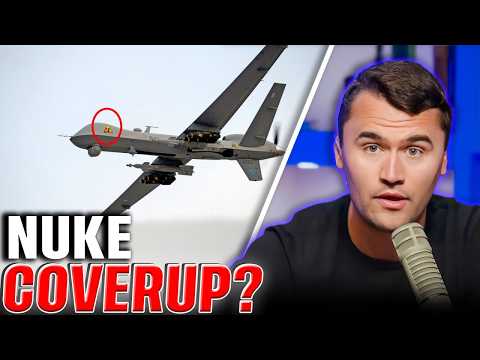**Drones, Nuclear Warheads, and the Fight for Awareness: Saxon Aerospace’s Viral Moment**
In a world where social media can make anyone famous overnight, John Ferguson, the CEO of Saxon Aerospace, found himself in the viral spotlight thanks to a concerning discussion about drones and nuclear security. During a recent appearance on a popular conservative news program, Ferguson revealed alarming details about a missing nuclear warhead that had potentially made its way toward the United States. The sensational claim stirred up enough confusion to warrant a deeper examination, but more importantly, it has sparked a serious conversation about national security.
Ferguson’s viral moment began when he shared a story about a gentleman who claimed to have touched a nuclear warhead left behind in Eastern Europe. This individual tried to raise the alarm to the government, but it seems his cries fell on deaf ears. The implication? This warhead could have serious implications for the United States. As tensions escalate between nations, this revelation is enough to send chills down the spine of even the most relaxed citizen. The urgency in Ferguson’s message was palpable, inspiring fear and curiosity as people started questioning the safety of their homeland.
Despite the mounting anxiety, Ferguson set the record straight about his role in this drama. He emphasized that Saxon Aerospace is not a government-backed operation. Instead, he acts as a bridge to elevate concerns about potential nuclear threats, shining a light on the gravity of the situation. The conversation shifted from outrageous panic to a plea for constructive attention. This shift opened the door for further discussion about drones’ roles in modern aerial surveillance and their possible use in detecting radioactive materials.
Drones have become increasingly sophisticated, capable of identifying gas leaks and possibly radioactive elements. Yet, despite their technological prowess, the government’s stance on drone operations remains stubbornly opaque. Ferguson pointed out that many of the drone videos circulating online have left people scratching their heads in both wonder and worry. Their nighttime flights and careful navigation gave off an air of mystery while following FAA guidelines possibly to avoid causing chaos in the sky. However, why the clear-cut air traffic rules in normal airways were being bent for what seemed to be dubious purposes only stoked the flames of speculation.
Despite these concerns, Ferguson urged the public not to jump to conclusions about nefarious intentions behind these drones. Instead, he suggested that there might be more benign explanations for their presence, albeit still crucial for national security. For both amateur thinkers and seasoned analysts, this opens up a dialogue on what these flying machines could be looking for. The actual threat could remain unknown, but Ferguson’s background with unmanned systems suggests we ought to be more curious than terrified.
Ultimately, Saxon Aerospace’s viral moment seems to embody the tension between fear and awareness, prudence, and panic. With a sprinkle of humor and a serious tone, the situation boils down to a simple fact: the drones flying above us are possibly linked to something greater than ourselves. While we might never know the full story behind their missions, it is vital for the public to stay informed and actively engaged in the search for truth. As Ferguson hinted, it is time to take a collective stand and ensure that the right people hear the alarm bells ringing about potential threats before they slip through the cracks once more.



